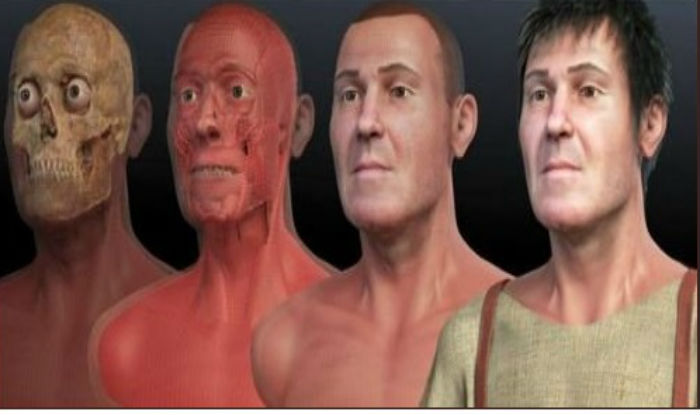Every year, February 14 is celebrated as Valentine’s Day with a lot of ‘love’ across the world. We all know February as the month of romance, and couples leave no stone unturned to make their partner feel special. But it is important to remember that the day is celebrated to honour St. Valentine. There are many versions of the story, but it is popularly believed that Emperor Claudius II executed two men — both named Valentine — on Feb. 14 of different years in the 3rd century A.D. Their martyrdom was honoured by the Catholic Church with the celebration of St. Valentine’s Day. And Brazilian graphic designer Cicero Moraes has reconstructed Saint Valentine’s face using digital scans of the remains kept at the church, reports Daily Mail.

Scientists Reconstruct Face of 9000-Year-Old Mesolithic Girl; The Greek Teenager Has an Angry Expression and Masculine Features
With the help of 3D scans, the real face of Saint Valentine may have finally been revealed. It shows that the Italian Saint had a strong jawline and died a young man when he was killed on February 14, 269 AD. This finding contradicts the previous reconstructions of the Patron Saint of Love, which typically suggested that he was an older man of affluence. Though not much is known about St. Valentine, it is believed that he was executed after he secretly defied a Roman Emperor’s strict ban on marriage, helping soldiers to pair off with their wives illegally. His skull is kept at the Basilica of Santa Maria of Cosmed in Rome, Italy, state news reports. And Brazilian graphic designer Cicero Moraes reconstructed the face of the Patron Saint with the help of scans of the skull taken by a team of archaeologists from Italy’s University of Padua last year.
Watch the video here:
“I started modelling the main muscles over the skull, after that we put tissue depth markers to know how was the face formed in different regions. After, I made digital sculpting over the muscles and tissue depth markers. To finish, I put the hair and clothes,” said Moraes, owner and founder of imaging firm Cogitas3D, in an interview to Mail Online. He adds that it took him about a week to complete the reconstruction. Explaining the difference in the findings between the current and the previous reconstructions, Moraes says that the differences between his reconstruction and previous work based on the skull reflects the convoluted nature of the myth surrounding the Saint.




















